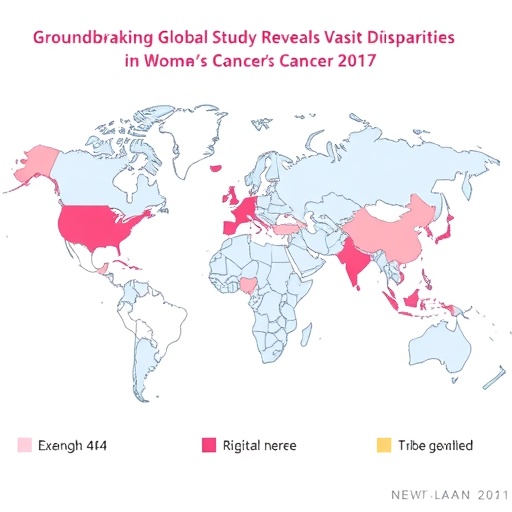Recent advancements in cancer immunotherapy have opened new avenues for harnessing the body’s immune response against tumors. Among these innovative strategies, photodynamic therapy (PDT) has gained prominence for its ability to induce immunogenic cell death, effectively transforming dying cancer cells into self-sufficient vaccines. However, the underlying challenge remains: many tumors possess innate genetic tolerance mechanisms that thwart the anticipated efficacy of such immunotherapeutic approaches. In groundbreaking new research, a pioneering team has developed a revolutionary heritable nanoplatform that employs sophisticated gene editing techniques to circumvent these issues, potentially changing the landscape of cancer treatment forever.
The research introduces a cutting-edge NanoCRISPR/HO-1 gene editing scaffold aimed at targeting haem oxygenase-1 (HO-1), a key player in the genetic tolerance of tumors and their resistance to reactive oxygen species (ROS). The conventional wisdom in cancer treatment emphasizes overcoming the tumor’s defenses, and this innovative approach represents a significant forward leap in that strategy. By effectively knocking out the HO-1 gene, this novel platform eradicates the tumor’s capacity to tolerate oxidative stress that is generally induced through therapies like PDT.
The findings from this innovative research demonstrate that the NanoCRISPR scaffold not only modifies the tumor’s genetic landscape but does so without adversely affecting major immune cells. This is crucial; preserving the integrity of key immune cells while simultaneously interfering with tumor survival pathways sets the stage for establishing a more robust and durable immune response. The long-term implications of such an immune response could drastically alter how we perceive cancer immunotherapy, leading to advances in how we use autologous vaccines derived from cancer patients.
The concept of using a heritable nanoplatform is particularly noteworthy. This technology affords a unique advantage, as it can induce a genetically sensitive phenotype in the progeny of tumor cells. Thus, rather than individual interventions based on a one-time treatment, this approach lays the groundwork for a more enduring change in how tumors respond to therapeutic modalities. The result is a tumor microenvironment that is more susceptible to oxidative stress, thereby encouraging a more effective therapeutic response.
In addition to its primary mechanism targeting HO-1, the NanoCRISPR scaffold boasts an intriguing combination of components that enhance its functionality. Specifically, an arginine-grafted polyethyleneimine module, along with a CpG motif, collectively serve to amplify the cancer-immune cycle. By promoting increased antigen generation, T cell proliferation is significantly enhanced. This not only activates the adaptive immune response but also underscores the scaffold’s potential in synergizing multiple aspects of the immune response against the tumor.
The combination of the NanoCRISPR scaffold with an alpha-PD-L1 antibody creates an even more formidable therapeutic regimen. In preclinical models involving melanoma, this combination elicited elicited an impressive antitumor immunity response characterized by a robust immunological memory. Such a multi-pronged approach signifies the potential for combining gene editing with immune checkpoint inhibitors, suggesting a novel framework for treatment protocols that could be translated into clinical practice.
Crucially, the significance of durable immune memory should not be underestimated. The ability to evoke strong immune memory against tumor rechallenge proposes exciting possibilities for future cancer vaccinations. In the context of cancer treatment, this could mean a paradigm shift, transforming how oncologists manage patient care through vaccination regimens.
As researchers continue to explore the intricacies of immune responses to cancer, this study provides an invaluable contribution to the growing literature around cancer immunotherapy and gene editing. By marrying these two fields, the research epitomizes the cutting-edge nature of contemporary biomedical engineering and its transformative influence on therapeutic interventions.
Beyond the direct implications for cancer treatment, the study exemplifies the potential for innovative technologies like the NanoCRISPR scaffold to be adapted for broader applications. This transformative platform may serve as a testing ground for encompassing various oncogenic targets and pathways, further diversifying the arsenal of strategies available in the battle against cancer.
With such promising results in preclinical models, the next steps involve translating these findings into clinical settings. This transition not only demands rigorous testing for safety and efficacy but also highlights the broader ethical and logistical considerations surrounding gene editing in humans. As we move forward, it is paramount that such cutting-edge technologies are developed responsibly and with stringent oversight.
The multidimensionality of the challenges posed by cancer calls for equally sophisticated solutions. This innovative research heralds a new chapter in our understanding of the interplay between gene editing and immunotherapy, ushering forth an era of unprecedented promise in combatting one of humanity’s greatest health adversaries. The potential for personalized medicine rallies behind this research, poised to redefine patient outcomes in the realm of oncology while illuminating new pathways for future investigations.
As the boundaries of science continue to expand, this research stands as a testament to the power of collaborative multidisciplinary efforts. By merging genetic engineering, immunology, and oncology, the researchers pave the way for strategies that employ the immune system as a formidable ally against cancer. It is a perfect illustration of the innovative spirit that drives scientific inquiry—one that is certainly deserving of attention within the broader biomedical community.
The future of cancer treatment is critically dependent on continuous exploration and testing of new paradigms in immunotherapy and gene editing. This study, highlighting the potential of the NanoCRISPR platform, demonstrates that we are only beginning to uncover the full scope of interventions possible through these modalities. If successful in clinical applications, the implications could very well extend into realms beyond oncology, suggesting applicability across a range of disease mechanisms.
The research team’s timely work encourages a broader dialogue regarding gene editing technologies’ ethical dimensions and their impact on society at large. All eyes will remain on the developments stemming from this innovative approach as the quest toward effective cancer treatments continues unabated.
Subject of Research: Gene editing and immunotherapy in cancer treatment.
Article Title: A HO-1 gene knockout using a NanoCRISPR scaffold suppresses metastasis in mouse models.
Article References:
Wang, N., Luo, Z., Liu, C. et al. A HO-1 gene knockout using a NanoCRISPR scaffold suppresses metastasis in mouse models.
Nat. Biomed. Eng (2025). https://doi.org/10.1038/s41551-025-01518-1
Image Credits: AI Generated
DOI: 10.1038/s41551-025-01518-1
Keywords: Gene editing, immunotherapy, cancer vaccine, photodynamic therapy, NanoCRISPR.
Tags: advanced nanoplatforms in medicinecancer immunotherapy advancementsgene editing techniques in immunotherapyheritable gene editing in oncologyimmunogenic cell death in tumorsinnovative cancer treatment strategiesNanoCRISPR tool for cancer treatmentovercoming genetic tolerance in cancer cellsoxidative stress and cancer resistancephotodynamic therapy and tumor responsereducing metastasis in cancer therapytargeting HO-1 gene in tumors





